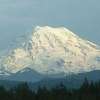
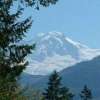
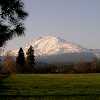
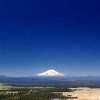
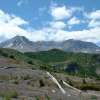
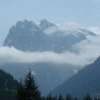
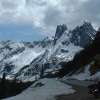
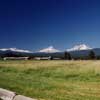
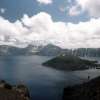
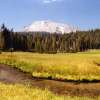
 |
 |
 |
 |
 |
 |
 |
 |
 |
 |
The Cascade Mountains rise to heights of nominally 6000-8000 feet above sea level and extend from British Columbia, Canada, through Washington and Oregon, and to Mt. Shasta and Mt Lassen in Northern California. This mountain chain is the first barrier to the inland flow of air from the Pacific Ocean and drains the moisture from that air in the form of rainfall and snow. The result is that the western sides of these states are lush and green while the eastern sides are considerably drier with vegetation more typical of high deserts.
The most distinguishing features of the Cascades are the volcanoes that are scattered throughout the range. These solitary volcanoes rise majestically above the rest of the Cascades, reaching nearly double the height of the surrounding mountains. More than any other distinguishing feature, the volcanoes are the hallmark of the Pacific Northwest and no trip to this part of the country is complete without seeing at least some of them. Mt. Rainier is the tallest at just over 14,000 feet, but Mt. Baker, Mt. Adams and Mt. Hood are equally beautiful. Mt. Saint Helens is a mere shadow of its former self after blowing its top on May 18, 1980.
In addition to the volcanoes, there are many other picturesque locations throughout the Cascade Mountains. Many of them can be seen along the Cascade Loop, a combination of roads that includes Stevens Pass and the North Cascades Highway. Further south are Three Sisters and the very popular and scenic Crater Lake. At the southern end of the Cascades is Mt. Lassen National Park.
HTML by
Thomas R. Powell & Associates
Last updated on 02/20/2012.